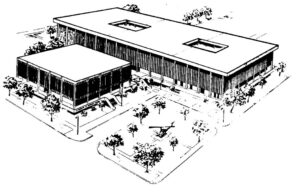CORRESPONDENCE COURSE OF
THE U.S. ARMY MEDICAL DEPARTMENT CENTER AND SCHOOL
SUBCOURSE MD0841 EDITION 200
INTRODUCTION

Parasitic infection can greatly interfere with a soldier’s ability to complete his mission. The presence of parasites in a soldier’s system can not only interfere with his ability to function, but also can make him susceptible to certain diseases. Since soldiers may serve in most areas of the world, you must be able to identify parasites that are found in the various parts of the globe.
In your job as a medical laboratory specialist, you will perform a variety of test procedures on samples taken from humans. Some of these samples will include feces and tissue scrapings used in the diagnosis and treatment of parasitic infection. Therefore, you must be knowledgeable in several areas of parasitology. The knowledge
you will need is reflected in the two subcourses you are about to study.
Subcourses MD0841, Parasitology I, and MD0842, Parasitology II, address areas of particular importance in parasitology.
Subcourse MD0841, Parasitology I, will give you a basic background in parasitology. An overview of parasitology; safety and quality control in the parasitology laboratory; taxonomy of parasites infecting humans; and microscopy are presented in this
subcourse.
It is necessary for you to master the content of this subcourse before you proceed to the next subcourse. If you already have a parasitology background, use this subcourse as a refresher before starting your study of Subcourse MD0842.
Subcourse Components:
The subcourse instructional material consists of two lessons and an appendix as follows:
Lesson 1, Introduction to Parasitology
Lesson 2, Collecting, Preserving, and Processing Clinical Specimens.
Appendix, Glossary.
Here are some suggestions that may be helpful to you in completing this subcourse:
–Read and study each lesson carefully.
–Complete the subcourse lesson by lesson. After completing each lesson, work the exercises at the end of the lesson
–After completing each set of lesson exercises, compare your answers with those on the solution sheet that follows the exercises. If you have answered an exercise incorrectly, check the reference cited after the answer on the solution sheet to determine why your response was not the correct one.
———————-
Download Here
Parasitology I
Length: 125 Pages
Estimated Hours to Complete: 10
Format: PDF file
Size: 1.8 MB
—————————-
Anyone may take this course. However, to receive credit hours, you must be officially enrolled and complete an examination furnished by the Nonresident Instruction Branch at Fort Sam Houston, Texas. Enrollment is normally limited to Department of Defense personnel. Others may apply for enrollment, but acceptance is not guaranteed.
—————————-
TABLE OF CONTENTS
INTRODUCTION
1 INTRODUCTION TO PARASITOLOGY
Section I. Overview of Parasitology
Section II. Safety and Quality Control in the Parasitology Laboratory
Section III. Taxonomy of Parasites Infecting Humans
Section IV. Microscopy
Exercises
2 COLLECTING, PRESERVING, AND PROCESSING
CLINICAL SPECIMENS
Section I. Overview
Section II. Blood Specimens
Section III. Gastrointestinal Tract Specimens
Exercises
APPENDIX: Glossary
—————————-
Sample
LESSON 1 Introduction to Parasitology.
LESSON ASSIGNMENT Paragraphs 1-1 through 1-33.
LESSON OBJECTIVES After completing this lesson, you should be able to do the following:
1-1. Given a term pertaining to parasitology and a group of statements, select the statement that defines that term.
1-2. From a group of statements, select the statement that describes the pathogenic effects produced by a parasitic infection on a host.
1-3. From a group of statements, select the statement that describes how parasites can infect a host.
1-4. Given a group of statements, select the statement that describes the key factor that must be known in order to eradicate a particular parasite from an area.
1-5. From a group of statements, select the statement that describes a safety practice that should be followed in the laboratory.
1-6. Given the name of a type of material (e.g., specimen) and a group of statements, select the statement that describes how that material should be properly disposed.
1-7. Given the name of a particular category of chemical compound and a group of statements, select the statement that describes a safety consideration pertaining to that type of chemical substance.
1-8. From a group of statements, select the statement that describes a quality control consideration in the parasitology laboratory.
1-9. Given a group of statements and a taxonomic group, select the statement that best characterizes that group.
1-10. Given a group of statements pertaining to organism classification, select the statement that describes the use of genus and species classifications in reporting identified organisms.
1-11. Given the name of a part of a binocular microscope and a group of statements, select the statement that best describes that part or its use.
1-12. Given the multiplying power of the ocular lens and objective lens and a list of magnifications, select the total magnification of the given lens system.
1-13. From a group of statements, select the statement that best describes the proper care and/or maintenance required for a microscope or stereoscope.
1-14. Given an unlabeled illustration of a microscope or stereoscope and a list of names of the parts of that piece of equipment, match the name of the given piece with its location on the instrument.
1-15. Given a group of statements related to the use of a binocular microscope, select a guideline for focusing a microscopic preparation.
1-16. Given a group of statements, select the means by that the amount of light entering the microscope can be controlled.
1-17. Given the name of a type of sample preparation and a group of statements, select the statement that describes how that specimen should be scanned for the identification of parasites.
SUGGESTION After completing the assignment, complete the
exercises of the lesson. These exercises will help you
to achieve the lesson objectives.
—————————-
Download Here
Parasitology I
